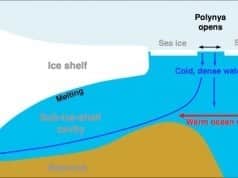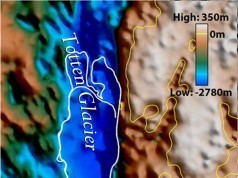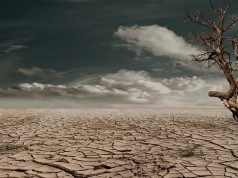Will a load-of-nonsense IPCC press release be corrected?
A little more than two years ago the UK’s Sunday Times ran a headline that read: UN wrongly linked global warming to natural disasters. (A screenshot may be seen here. The full text of the article is backed up here.)
The very next day, the UN’s Intergovernmental Panel on Climate Change (IPCC) issued a press release. It accused the newspaper of running “a misleading and baseless story” which it further characterized as “a baseless attack” on a section of its 2007 report.
The section in dispute dealt with the question of whether an increase in the financial costs associated with natural disasters can be blamed on human-induced climate change. The vast majority of published scientific literature rejects this idea. It finds that the increased costs associated with hurricanes, for example, can instead be explained by the fact that more people now live in hurricane-prone areas – and that their houses are larger and therefore cost more to repair.
According to the IPCC’s press release, its 2007 report is correct and nothing is amiss:
The tone is balanced, and the section contains many important qualifiers. In writing, reviewing, and editing this section, IPCC procedures were carefully followed.
Yesterday Roger Pielke Jr. – an environmental studies professor who specializes in natural disaster research – took another look at that press release. He’s familiar with this controversy because the single paper on which the IPCC relied to make the case that climate change can be linked to increasing disaster costs was prepared for a workshop he helped organize.
With the benefit of two years of hindsight, Pielke’s assessment is a harsh one:
We now know that the “study” that was cited by the IPCC (a white paper from a workshop that I had organized) did not contain any analysis of trends.When the miscited paper actually did appear in the [published] literature it said this:
“We find insufficient evidence to claim a statistical relationship between global temperature increase and normalized catastrophe losses.”
This means that the IPCC relied heavily on a non-peer-reviewed, grey literature, pre-publication version of a paper to support a claim that the vast bulk of published research contradicts. When that paper was finally published it didn’t say what the IPCC says it does.
Despite chairman Rajendra Pachauri’s solemn declaration that his organization’s 2007 report “was based on scientific studies completed before January 2006,” this paper didn’t see the light of day until May 2006 – and wasn’t published until two years afterward.
Adding another layer of notoriety to this matter, the IPCC report includes a graph it attributes to this same paper. But that graph didn’t appear in the 2006 version of that document. Nor did it appear in the 2008 version.
It turns out the graph was, in fact, wholly invented by the authors of the IPCC report. (See the graph at the bottom of page 4 here. Read more about this ‘mystery graph’ here.)
In Pielke’s view, it is the IPCC’s press release (which remains on its website) that is profoundly inaccurate. He thinks that, if this organization wants to be considered a dependable source of information, the release needs to be corrected.
In his words:
The IPCC did not follow its procedures for citing grey literature, for following its own deadline for publications, for proper citation of source material and included a graph that cannot be found in any literature anywhere. The IPCC press release was thus wrong again – the procedures were ignored, not “carefully followed.”
How many years will it take the IPCC to set the record straight – to admit that the exact opposite of its version of events is closer to the truth?
The rules were not properly followed. And it was the press release itself that amounted to a “baseless attack” – against a factually correct newspaper article.
Read Pielke’s full blog post here





